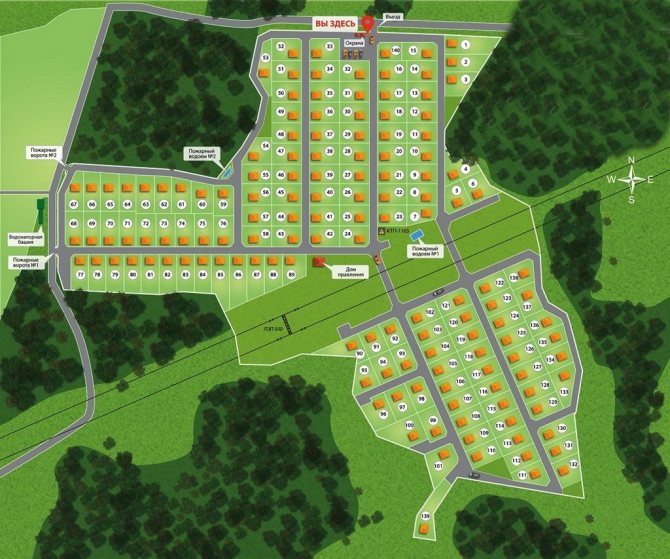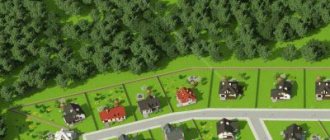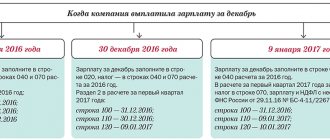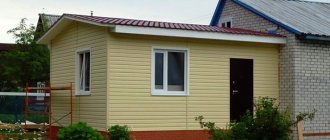All land in the Russian Federation is divided into plots that are intended for different purposes. On lands that are part of a settlement or allocated for agricultural activities, according to the legislation of the Russian Federation, you can build houses, register them and formalize ownership of them.
If the dacha plot is located within the city infrastructure, then it is possible to erect a residential building on it with subsequent registration of ownership. Whereas on lands allocated only for gardening, only non-residential buildings can be registered.
If the owner of a summer cottage nevertheless decides to build a house on it, register it and register the property of the country house, having received the title papers, then first of all he should obtain permission to carry out construction work.
The managing partner at the Zagorodny Stil real estate agency, Petr Manko, answers:
Today there are no obstacles to registering a residential building on agricultural land. In most gardening areas, for example, in the Leningrad region, plot owners register residential buildings and have the opportunity to register in them through the registration of an individual house register. In your case, the small problem is that you have broken the sequence of actions. It was necessary to attend to the issue of documents after the demolition of the old dacha, namely, to call a cadastral engineer to inspect the site and prepare an act confirming the absence of a building.
To determine the procedure, you need to find out whether the old dacha (non-residential building) was registered with coordinates and tied to the boundaries of the land plot? If not, then feel free to call a cadastral engineer, register the residential building, and liquidate the old dacha. There shouldn't be any problems.
Is construction allowed on SNT lands?
How to legalize construction at a dacha from March 1?
What is a DNP site?
Are the neighbors bothering you? read! The height of the fence between neighbors according to the law 2019
Dacha non-profit partnership. Today this is one of the most promising areas in the field of country real estate. One of the advantages over SNT is the possibility of registering a house without first recognizing it as residential.
It is organized on land plots for two purposes:
- settlement;
- agricultural land.
A dacha partnership includes at least three people. The association has the status of a legal entity and is registered with the tax service. Membership fees are also due, which is how the organization exists.
Differences between SNT and DNP
To decide which agricultural plot to purchase, you need to understand what each of the concepts means, as well as learn their differences.
Associations differ from each other by the following criteria:
- cost - dacha land is approximately 15-20% cheaper;
- Most often, gardening associations are located near populated areas.
- SNT has a more beautiful nature; it is located near ponds and forests;
- ease of registration in a dacha organization, in contrast to a gardening partnership.
Determine your priorities, and then the choice will not be difficult.
Mikhail Afrikanov, head of the Istra Valley project, answers:
It is better not to delay the full registration of your new home, because you have already violated the order if the data in the Unified State Register of Real Estate does not correspond to reality. You need to order the production of a new technical plan, which will be prepared by a cadastral engineer, and, together with the title documents, contact Rosreestr.
Before March 1, you could register the house on the basis of a declaration; after that, on the basis of a notification that would need to be sent to the local municipality. If the house really meets all the standards, registration should go through without problems. And in your case, unlike the owners of plots for gardening, you can actually register the house as a residential one and register in it.
Types of land plots
According to Art. 7 of the Land Code of the Russian Federation, there are seven categories of land:
- agricultural purposes;
- settlements;
- industry, energy, transport and others;
- protected areas and objects;
- forest fund;
- water fund;
- stock.
The legislation stipulates two main types of agricultural land: horticultural and vegetable gardening. The former are used for recreation and growing vegetables, fruits and berries. A plot of land of horticultural type can accommodate a house for seasonal residence, as well as temporary buildings. When transferring horticultural housing to individual housing construction, you can register in it.

Vegetable garden lands cannot accommodate a capital construction project . The location of outbuildings and temporary structures without a foundation is allowed. And, what is especially important, it is impossible to register on the territory of a gardening partnership.
Federal Law-66 dated April 15, 1998 has lost its force on January 1, 2021.
What is a SNT section?
Be sure to read it! How to privatize a house?
This is a community that acts as a legal entity endowed with certain rights, responsibilities and has the main characteristics:
- registration with government agencies;
- availability of constituent documents (including the charter);
- availability of public land (paved roads, playgrounds, parking areas, etc.).
On the land plot of the partnership, you can build a residential building for seasonal or permanent residence, erect sheds, garages and other buildings. In addition, the status of the land can be changed. In particular, this is necessary when applying for registration. If the garden house is intended for year-round use and complies with the legislative standards established for residential premises, a change of status to individual housing construction is allowed. Only after this is it possible to register at the address where it is located.

Members of the partnership can give, sell and bequeath property to other persons, but are prohibited from engaging in business activities on the territory of the land plot.
Note! Until March 1, 2021, a dacha amnesty is in effect, according to which land owners have the right to privatize property under a simplified scheme.
What does membership in SNT give ? One of the main advantages is shifting organizational issues onto the shoulders of the manager. The chairman is elected at the general meeting by a large number of votes. For example, it is he who decides on the issues of connecting electricity, while connecting to the electrical network, bypassing the partnership, entails independent actions at each stage of the process.
Some lands not distributed among the participants remain abandoned. The chairman’s task is to use the free territory for the construction of important facilities or other purposes. Also, an ownerless plot can be transferred to the ownership of the nearest settlement.
Advantages and disadvantages of SNT
Everyone should know! How to draw up a will for a house and land?
Pros:
- low cost of real estate when compared with individual housing construction (with cadastral valuation, the properties of gardening partnerships are cheaper);
- when building a house, the area of land is not important;
- environmentally friendly ecology (again, when compared with cities);
- fertile soil (land is allocated for gardening complexes that is suitable for growing crops).
Minuses:
- material obligations in the form of membership fees;
- difficulties with registration that arise if the house does not meet the requirements of residential premises;
- lack of communications (more precisely, they exist, but are carried out at the expense of gardeners).
Also, a disadvantage may be the range of placement of infrastructure facilities if the regional center is not close.
If you need a loan to purchase real estate on the territory of the partnership, there is a high probability of refusal. The fact is that banks do not like to lend to garden houses due to their low liquidity.
Nikita Chaplin, Chairman of the Union of Summer Residents of the Moscow Region, answers:
If the garden house was registered according to a declaration without reference to the coordinates of the land plot, then the easiest way is to register a new residential building and at the same time deregister the garden house as a non-existent property.
To do this, it is necessary to send a notification to the local administration about the start of construction. There, within seven days, you are required to issue a notice of compliance or non-compliance of the object with urban planning standards. After this, you need to prepare a technical plan for a residential building and send it to the administration simultaneously with notification of the completion of construction. Within 7 days, the administration makes a decision on the compliance of the constructed facility with the parameters of a residential building and urban planning standards, after which it transfers the documents to Rosreestr in the order of interdepartmental exchange. The state fee for registering a residential building is 350 rubles (Article 333.33 of the Tax Code of the Russian Federation).
In parallel with the preparation of documents for a residential building, it is necessary to remove the garden house, which has already been dismantled, from the cadastral register. To do this, it is necessary to call a cadastral engineer or a BTI employee who will draw up an inspection report to remove the garden house from the cadastral register and state registration of rights in connection with the cessation of the existence of such real estate.
Is it possible to register a house under the dacha amnesty after March 1
Do I have to get permission to add an extension to my house?
What is the procedure for registering a dacha as a residential building?
The Town Planning Code of the Russian Federation strictly regulates the procedure for obtaining permits to begin construction of a residential building, garden house or other building in the country. To prepare such papers, the owner must contact the local government and provide the following documents:
- papers confirming the ownership of the dacha plot;
- urban planning plan;
- other design documents.
Together with the application, all documents are reviewed from the moment of submission for 10 days, after which a decision is made and, if it is positive, then the owner will receive a building permit for 10 years.
Construction work on the following facilities does not require a permit:
- garage space owned by an individual and not used for commercial purposes;
- buildings for gardening and horticulture;
- auxiliary structures;
- objects not related to capital construction (canopy).
How to convert non-residential premises into residential ones?
If the technical plan is in an electronic storage, only the identifying number of the technical plan can be indicated in the application. In this case, submission of a technical plan will not be required.
In accordance with paragraph 5 of Art. 403 of the Tax Code of the Russian Federation, the tax base for a residential building is defined as its cadastral value, reduced by the cadastral value of 50 square meters. m of the total area of this residential building.
The decision is made within a period not exceeding 45 days. After making a decision, the authorized body is obliged to notify the applicant within three days. If the transfer of housing to a new status is refused, the reason is indicated.
After this, within forty-eight days from the moment of its submission, a response is received from the state property department with either consent or refusal. In case of a negative decision, you can appeal it in court within three months from the date of receipt of the notice.
The general provisions of these articles establish that the transfer of non-residential premises to residential premises is not allowed if the premises do not meet the established requirements or there is no possibility of ensuring its compliance with the established requirements, or if the ownership of it is encumbered by the rights of any persons. Residential premises are recognized as a residential house, apartment or room. A residential building is understood as an individually defined building, which consists of rooms, as well as premises for auxiliary use, intended to satisfy citizens’ household and other needs related to their residence in it. The premises must comply with fire safety, sanitary, hygienic, environmental and other legal requirements.
If he has nowhere else to live, and registration is allowed at the dacha, then he has the right to register the property as his own - and re-register the dacha into a residential building. List of documents for registering a dacha as a residential premises To re-register, you need to collect a documentation package, which includes:
It is possible to convert a dacha into residential premises if certain conditions are met. They relate to land plots and country houses. In particular, the requirements for a land plot are related to the category to which the plot belongs. It is imperative that these are lands related to populated areas. If the non-residential premises are located on a site that is classified as agricultural land, then before converting the dacha into a residential building, you will need to transfer the land from one category to another. The land in gardening partnerships must be located in the zone where buildings with residential purposes are being erected. Please note that only a few uses are permitted, these include:
In order to find out how you can convert a non-residential house in SNT into residential in 2021, you need to pay attention to the fact that after purchasing real estate in a holiday village, over time you have the opportunity to transfer it to the status of residential premises. You will need to find out how this procedure is carried out, and what actions should be taken if you are denied it.
How to convert a country house into a residential one
Not all fields are filled in
Not all fields are filled in
In order to convert a garden house into a residential one, the building must comply with the following parameters:
- the object complies with the established requirements and standards for residential premises;
- all co-owners and other persons having rights to the object agree to the transfer;
- the garden house is owned by the applicant;
- the premises are not encumbered by arrests, liens, or prohibitions;
- the owner of the premises has legal rights to the land plot (lease or ownership);
- the garden house is registered in the Unified State Register of Real Estate.
Non-compliance with any of the listed parameters automatically entails a refusal by the authorized body to change the status of the building.
An important step in the process of transferring premises is obtaining a mailing address. This is carried out at the request of the owner in the department of architecture and urban planning in the district administration.
To do this, you need to fill out an application and prepare the following documents:
- owner's civil passport;
- cadastral passport;
- title document for the object;
- extract from the Unified State Register of Real Estate.
As a general rule, the address of the premises is assigned in accordance with which street the front part of the building faces. That is, the owner’s opinion is not taken into account.
A decision on the application is made within 18 days. Information about the assignment of a postal address is not sent to the applicant. The information is transferred to the Unified State Register of Real Estate.
The last stage of the transfer is registration in the Unified State Register of Real Estate.
The procedure for recognizing a dacha as a residential building through the MFC or Rosreestr:
- Collect documents. These include a civil passport, an application, a technical report and a permit from the local government.
- Submit an application to Rosreestr in person or through the MFC.
- Pay the state fee (2,000 rubles from each owner).
- Get a receipt.
- After 10–14 days, receive a new extract from the Unified State Register of Real Estate.





